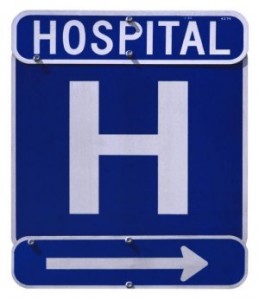How to Use Insurance to Lower Unexpected Costs
 If you rent your home you may not be required to carry Renter’s Insurance but you should, and here is why. Renter’s Insurance acts like homeowners’ insurance for people who don’t own their own homes. Your Renter’s Insurance policy will cover the cost of replacing your furniture, appliances, expensive items like jewelry, and electronics. But Renter’s Insurance also carries personal liability coverage. If someone is visiting your home and they fall and injure themselves, or one of your pets hurts them (requiring medical treatment), your Renter’s Insurance will cover your obligations (provided you comply with their terms of coverage).
If you rent your home you may not be required to carry Renter’s Insurance but you should, and here is why. Renter’s Insurance acts like homeowners’ insurance for people who don’t own their own homes. Your Renter’s Insurance policy will cover the cost of replacing your furniture, appliances, expensive items like jewelry, and electronics. But Renter’s Insurance also carries personal liability coverage. If someone is visiting your home and they fall and injure themselves, or one of your pets hurts them (requiring medical treatment), your Renter’s Insurance will cover your obligations (provided you comply with their terms of coverage).
Renter’s Insurance policies are very inexpensive. That is because they don’t have to cover the building you live in. The building owner should have insurance to replace the structure, so your Renter’s Insurance is a pretty good deal. A typical policy should cost well below $50 a month. I have seen some policies cost less than $15 a month. Your premiums are tied to how much coverage you want.
If you own a vehicle many companies will allow you to bundle your vehicle and rental insurance, thus providing for a slight discount. In fact, bundling all your policies with one insurer often produces savings in your monthly premiums. Ask your agent to explain what options are available to you.
If you are in pretty good health and have no chronic conditions you may be able to protect yourself with relatively cheap medical and dental insurance. If you cannot afford Obamacare insurance (which is too expensive for most middle class families that don’t qualify for government subsidies) then you may be able to buy a more affordable insurance plan that offers less coverage. For example, Short Term Medical insurance excludes pre-existing conditions but covers office visits and prescriptions.
If you don’t have any major dental work in your near future you can probably find a policy for $20-35 a month. An accident policy and/or a hospital indemnity policy can cover you and your family for less than $40 a month. The most expensive form of insurance, major medical, can still be reduced to a low premium if you forego some of the coverage on hospital services. Using accident and hospital indemnity plans makes up for the lost hospital services.
While combining these kinds of plans may not satisfy Obamacare requirements you’ll only have to pay about 1% of your income as a penalty on your taxes for not buying Obamacare insurance. For many families it is less expensive to do that and still acquire some health insurance through alternative plans. Just remember that once you develop a chronic condition or require major surgery you’ll probably be better off with a full insurance plan, and then you may have to wait through an elimination/exclusion period. Those periods can last anywhere from 3 to 12 months.
You can give yourself and your family a little more protection by increasing the hospitalization coverage on your vehicle insurance. If you are injured while in your vehicle, requiring hospitalization, most default coverages on vehicle polices are very low.
About the only gap you cannot cover with today’s alternative insurance coverages is if you develop a major infection. Many kinds of bacterial infections enter the body through the skin. These are not just staph infections; there are other kinds, too. A bacterial infection requiring hospitalization can cost you thousands of dollars, depending on how long you are admitted to the hospital. In such situations it may be better to go to the nearest city, state, or county hospital. But all hospitals are required by Federal law to stabilize your condition, so if you have a life-threatening infection they cannot deny you treatment. You can work out a payment plan with their accounting department later.
Insurance only pays for expenses incurred AFTER you take out the policy, so don’t rush out to buy insurance after you have been diagnosed or treated for illness or injury. Unfortunately the lawmakers in Washington shifted the costs of insuring millions of previously uninsured people to the middle class. Millions of people are now without insurance because they make too much money to qualify for discounts and not enough money to pay for compliant insurance.


